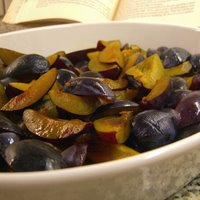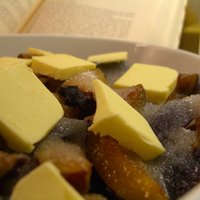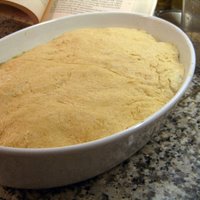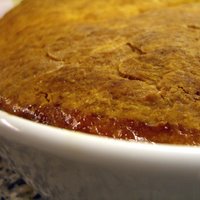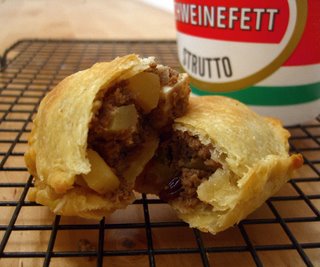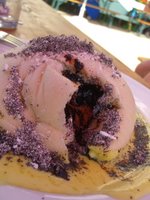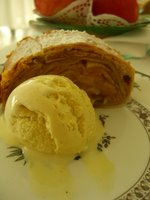About once a year, my husband tries to make an authentic empanada, which he fondly remembers from his years living in Argentina. Although delicious, they are never “just right”, suffering from some indescribable error in the dough or filling. But this time, we discovered at least one secret: lard! It turns out, not only is lard critical in the dough itself, but also in the filling. According to my husband, a real empanada should drip fat down your arms when you eat it.
In San Francisco, I would get my lard at the Mexican markets. But in Zurich, we had to settle for Schweinefett at the Jelmoli’s gourmet factory. I’m not quite sure it’s the same thing. The Schweinefett was bright white, while I think lard is more translucent and yellowy. Regardless, it creates a much more authentic flavor. I have a little leftover so I see some refried beans in my future. Yum yum.
Empanada Dough, from Joy of Cooking
I tried my favorite sour cream turnover dough, which was very good but maybe too fancy for this classic street food. This dough uses lard, which gives a more hearty flavor.
Place in a large bowl or food processor:
3 cups flour
1.5 tsp baking powder
1 tsp salt
Mix with a fork or pulse until combined. Add:
10 tbsp (5oz) cold unsalted butter, cut into small pieces
½ cup lard or shortening, cut into small pieces
Cut the butter and lard into the flour mixture using a pastry blender or pulse in a food processor until the mixture resembles coarse crumbs. If using food processor, transfer to a large bowl. Drizzle over the top:
11-13 tbsp ice water
Mix gently with a fork until the flour mixture is dampened enough to gather into a ball. Shape into a flat disk, wrap tightly in plastic, and refrigerate for a least an hour. (My counter can’t accommodate rolling out the whole thing, so I divide the dough in half and wrap each half separately).
Filling
After reading many empanada recipes, my husband threw the filling together from a general outline. I tried to capture what he did in this recipe, but I suspect there’s some magic in his method that I’m missing. Warning: this makes much more than the above dough can accommodate. Use your best judgment.
Heat in a large nonstick skillet over medium heat: ½ cup lard
Add: ¾ kilo onions, diced
Cook, stirring, until the onion is translucent, about 5 minutes. Stir in:
2 carrots, chopped
2 medium potatoes, chopped
~800 grams ground beef
1 TB salt
1 TB caldo or bouillon
“Slow cook” for maybe 30 minutes. Meanwhile, hard boil 3 eggs
Take off heat. Stir in:
½ TB paprika
1 TB cumin
2 TB sugar
1 cup raisins
Cool mixture. Stir in:
3 hardboiled eggs, chopped
~1/2 cup green olives, chopped
Refrigerate until ready to use.
Assemble & Cook
Preheat oven to 400F. Roll out the dough 1/8 inch thick on a lightly floured surface. Cut 6-inch rounds. Re-roll scraps as necessary. Spoon ¼ cup of filling onto one side of each round. Moisten the edges of the edges together to completely enclose the filling. Roll the edges for a decorative edge. Place 2 inches apart on a baking sheet. Optionally brush tops with egg wash. Bake until nicely browned 15-25 minutes (depending on the size of the empanadas), till golden brown.


